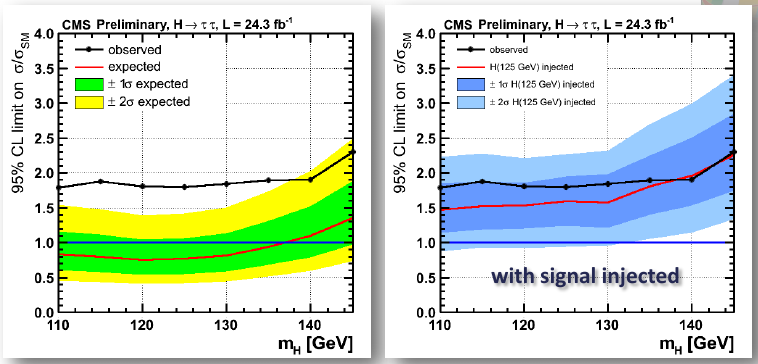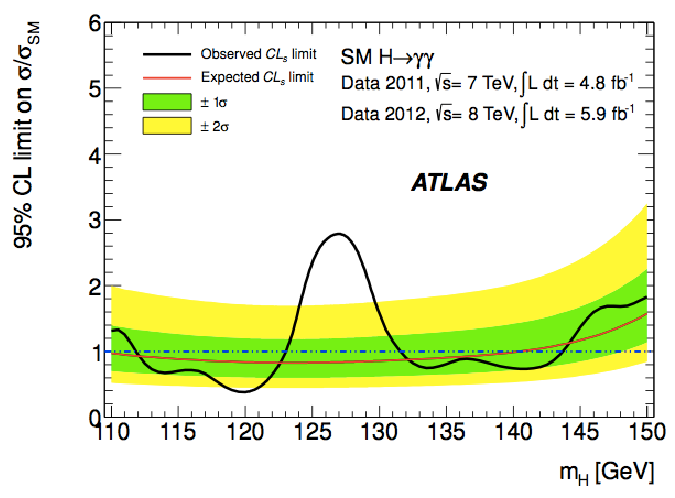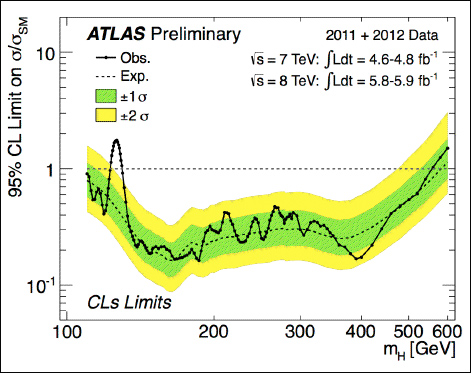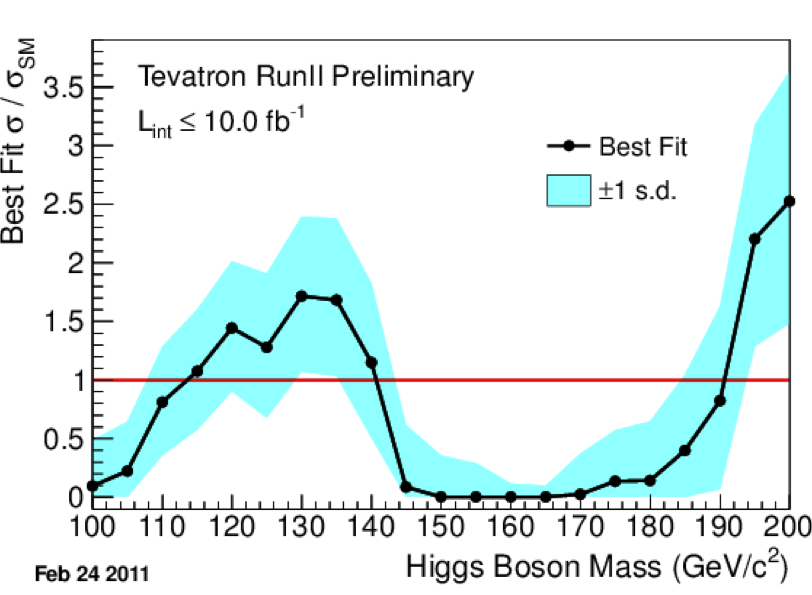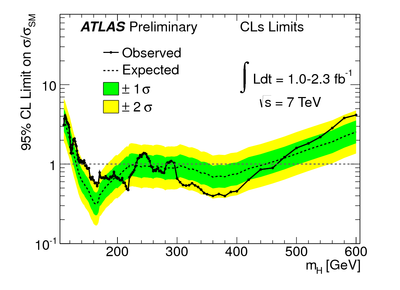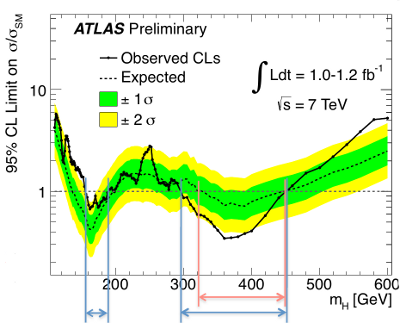More Higgs updates from Moriond
Posted by David Zaslavsky on — Edited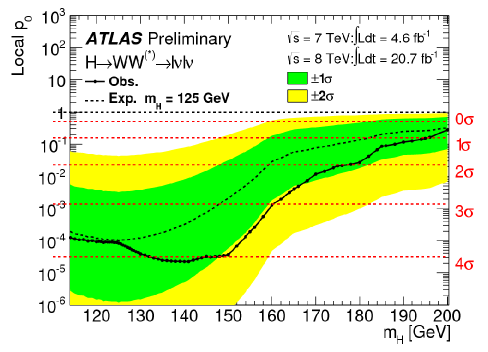
Sit back, close your eyes, and think all the way back to… last week, when physicists from the LHC experiments presented their latest results on the Higgs search at the Rencontres de Moriond Electroweak session. Yes, I know, we barely had time to digest those results. But digest we must, because this week there are even more new results coming out, from the Moriond session on QCD and High Energy Interactions. And what the experiments have presented today is, rightly or wrongly, turning a lot of heads.
The key update from today’s presentations is a measurement by ATLAS of the cross section for the Higgs decaying to two W bosons, which each then decay to a lepton and a neutrino: the \(H\to WW\to ll\nu\nu\) channel. It comes on the heels of a similar measurement presented by CMS last week. Both detectors are now reporting that they measure a strong signal for \(\ell\bar\ell\nu\bar\nu\) detection beyond the standard model (without a Higgs boson) at \(\SI{125}{GeV}\), with a significance of \(4.0\sigma\) at CMS and \(3.8\sigma\) at ATLAS. In other words, if the particles of the standard model …
